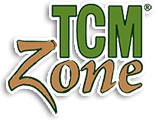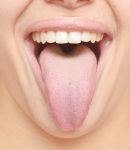Advanced Pulse Diagnosis: Illuminating Patterns for Personalized Treatment

By Xiyuan “Alex” Qiu, L.Ac.
In the advanced landscape of acupuncture and herbalism, pulse diagnosis evolves into an intricate art form, revealing profound insights into a patient’s energetic landscape. This comprehensive guide transcends the basics, offering seasoned practitioners expert-level specifics to expand their knowledge base. By delving into subtleties in pulse qualities and providing specific examples of patterns, we unravel the intricacies that pave the way for personalized and precise treatment strategies, elevating the practice of advanced acupuncturists and herbalists.
1. Beyond Rate and Rhythm: Advanced Insights into Pulse Qualities
Traditional Understanding:
- Pulse Rate and Rhythm: Traditional pulse diagnosis often focuses on the rate and rhythm of the pulse, providing broad indications of imbalances.
- Three Depths: The pulse is traditionally assessed at three depths (superficial, intermediate, and deep), offering a rudimentary understanding of organ system involvement.
Advanced Insight:
- Individual Pulse Qualities: Advanced practitioners discern beyond basic parameters, exploring pulse qualities that unveil specific nuances in organ function and Qi dynamics.
- Expansion of Depths: Beyond the traditional three depths, practitioners explore micro-depths within each layer, refining diagnostic precision.
Specific Examples:
- Example 1: A deep, wiry pulse in the Liver position may indicate Liver Qi stagnation, pointing towards emotional or hormonal imbalances.
- Example 2: A superficial, slippery pulse in the Spleen position may suggest Dampness, guiding the practitioner to address digestive issues.
 2. The Dance of Yin and Yang: Identifying Imbalances in Dualities
2. The Dance of Yin and Yang: Identifying Imbalances in Dualities
Traditional Understanding:
- Yin-Yang Balance: Pulse diagnosis often involves assessing the balance between Yin and Yang, providing a foundational understanding of energetic equilibrium.
- Elemental Associations: Pulse qualities are associated with the Five Elements, aiding in broad elemental assessments.
Advanced Insight:
- Yin-Yang Micro-Dynamics: Advanced practitioners discern subtle imbalances within the Yin-Yang relationship, uncovering intricate patterns that guide targeted interventions.
- Elemental Harmony and Disharmony: Pulse qualities offer nuanced insights into specific elemental disharmonies, allowing for precise elemental rebalancing strategies.
Specific Examples:
- Example 1: A weak, deep pulse in the Kidney position may indicate Yin deficiency, guiding the practitioner to tonify Kidney Yin with specific herbal formulas.
- Example 2: An excess, forceful pulse in the Heart position may suggest Yang excess, prompting interventions to disperse excess heat.
3. Pulsatility and Resilience: Exploring Vascular Dynamics
Traditional Understanding:
- Basic Pulsatility: Pulse qualities may be categorized as floating, sinking, rapid, or slow, offering general indications of Qi and Blood flow.
- Strength and Weakness: Strength or weakness of the pulse is assessed, providing insights into the overall vitality of the patient.
Advanced Insight:
- Pulsatility Patterns: Advanced acupuncturists dissect pulsatility patterns, discerning irregularities, hesitations, or accelerations that unveil specific vascular dynamics.
- Resilience Assessment: Beyond strength, practitioners evaluate the resilience of the pulse, identifying the vessel’s ability to adapt to changing conditions.
Specific Examples:
- Example 1: A hesitant, wiry pulse in the Lung position may indicate Blood stasis, prompting interventions to promote Blood circulation.
- Example 2: A bounding, forceful pulse in the Liver position may suggest Liver Yang rising, guiding treatments to pacify excess Liver Yang.
4. Depth of Invasion: Unraveling the Energetic Layers
Traditional Understanding:
- Superficial, Intermediate, and Deep Layers: Pulse diagnosis traditionally assesses the pulse at three primary depths, guiding practitioners to identify the depth of energetic invasion.
- Pulse Strength: Superficial pulses may indicate external pathogenic factors, while deep pulses may suggest internal imbalances.
Advanced Insight:
- Micro-Layer Assessment: Advanced practitioners discern micro-layers within each traditional depth, unraveling intricate details of Qi dynamics and organ involvement.
- Pathogenic Penetration: Subtle variations in pulse qualities aid in pinpointing the depth of pathogenic invasion, guiding the formulation of targeted treatment protocols.
Specific Examples:
- Example 1: A floating, wiry pulse in the Lung position may indicate Wind invasion at a superficial level, prompting wind-dispelling interventions.
- Example 2: A deep, weak pulse in the Spleen position may suggest spleen deficiency, guiding the practitioner to resolve through herbal formulations.
5. The Silent Symphony: Discerning the Quality of Silence in Pulse Diagnosis
Traditional Understanding:
- The Absence of Pulse: Silence in pulse diagnosis is often associated with blockages or profound disharmony, necessitating intervention.
- Pulse Absence and Organ Dysfunction: The absence of pulse at certain positions may suggest underlying organ dysfunction.
Advanced Insight:
- Silent Resonance: Advanced acupuncturists explore the quality of silence, discerning nuances that reveal the nature of blockages, stagnation, or hidden imbalances.
- Subtle Silence in Health: Practitioners recognize the existence of subtle silence even in a healthy pulse, offering insights into an individual’s baseline energetic state.
Specific Examples:
- Example 1: A silent, deep pulse in the Kidney position may indicate Kidney Yin deficiency, prompting interventions to nourish Yin.
- Example 2: A subtle silence in the Heart position may suggest emotional blockages, guiding treatments to address underlying emotional imbalances.
6. Pulse Diagnosis in Dynamic States: Capturing the Flow of Qi and Blood
Traditional Understanding:
- Static Assessment: Pulse diagnosis is often conducted in a static state, providing a snapshot of the patient’s energetic condition at a particular moment.
- Basic Assessment of Flow: The flow of Qi and Blood is assessed in terms of speed and smoothness.
Advanced Insight:
- Dynamic Pulse Assessment: Advanced practitioners engage in dynamic pulse diagnosis, capturing changes in pulse qualities during specific movements or transitions.
- Implications for Treatment Timing: Dynamic assessment guides practitioners in selecting optimal times for interventions, aligning with the natural flow of Qi.
Specific Examples:
- Example 1: A wiry, erratic pulse during deep breathing may indicate Liver Qi stagnation, guiding treatments during specific breathwork exercises.
- Example 2: A smooth, harmonious pulse during gentle movement may suggest balanced Qi flow, informing interventions that support overall harmony.
7. The Pulse as a Palpable Art: Incorporating Palpation Techniques
Traditional Understanding:
- Basic Palpation Techniques: Traditional pulse diagnosis involves palpation techniques such as pressing, rolling, and sliding, providing a tactile understanding of pulse qualities.
- Pulse Points: Specific pulse points are palpated to assess the overall condition of corresponding organ systems.
Advanced Insight:
- Micro-Palpation Techniques: Advanced acupuncturists refine palpation techniques, incorporating micro-movements that unveil subtle pulse variations.
- Point-Specific Dynamics: Practitioners discern specific dynamics at individual pulse points, guiding targeted acupuncture point selections for personalized treatments.
Specific Examples:
- Example 1: Palpating the Kidney position with slight pressure may reveal a wiry, deep quality, indicating potential Kidney Yang deficiency.
- Example 2: Applying gentle rolling motions at the Stomach position may unveil a slippery, superficial quality, suggesting potential Damp-Heat conditions.
 8. Integrating Pulse Diagnosis with Tongue and Palpation Findings
8. Integrating Pulse Diagnosis with Tongue and Palpation Findings
Traditional Understanding:
- Tongue Diagnosis: Pulse diagnosis is often complemented by tongue assessment, providing additional insights into Qi, Blood, and organ conditions.
- Palpation Findings: Palpation of specific areas, such as the abdomen, supplements the overall diagnostic picture.
Advanced Insight:
- Synergistic Assessment: Advanced practitioners seamlessly integrate pulse findings with tongue diagnosis and palpation findings, creating a comprehensive diagnostic synthesis.
- Holistic Treatment Strategies: The combined assessment refines treatment strategies, allowing for a holistic approach that addresses multiple layers of imbalance.
Specific Examples:
- Example 1: A wiry pulse at the Liver position, combined with a red tongue with a yellow coating, may suggest Liver Heat, guiding interventions to clear Heat.
- Example 2: A slippery pulse at the Spleen position, coupled with abdominal tenderness during palpation, may indicate Dampness, guiding treatments to resolve Dampness.
9. Quantitative Measurements in Pulse Diagnosis: The Role of Technology
Traditional Understanding:
- Qualitative Assessment: Pulse diagnosis traditionally focuses on qualitative aspects, capturing the essence of Qi and Blood dynamics.
- Manual Palpation: The pulse is primarily assessed through manual palpation, relying on the practitioner’s sensitivity.
Advanced Insight:
- Quantitative Measurements: Advanced acupuncturists explore technological advancements, incorporating devices that provide quantitative measurements of pulse characteristics.
- Objective Data Integration: Technological tools offer objective data, enhancing diagnostic precision and providing quantitative metrics for tracking treatment progress.
Specific Examples:
- Example 1: Utilizing a pulse oximeter to measure pulse rate and oxygen saturation may complement manual assessment, providing additional quantitative data.
- Example 2: Infrared thermography may be employed to assess thermal variations along the pulse pathway, offering insights into potential Blood stasis or Qi stagnation.
10. Beyond Diagnosis: Implementing Personalized Treatment Protocols
Traditional Understanding:
- Diagnostic Formulation: Traditional pulse diagnosis guides the formulation of herbal prescriptions and acupuncture point selections.
- Treatment Based on Syndromes: Treatments are often categorized based on syndromes identified through pulse diagnosis.
Advanced Insight:
- Personalized Energetic Profiling: Advanced practitioners create personalized energetic profiles for each patient, tailoring treatments to address specific imbalances at the root level.
- Dynamic Treatment Adjustments: Ongoing dynamic pulse assessment informs real-time adjustments to treatment protocols, optimizing therapeutic outcomes.
Specific Examples:
- Example 1: A wiry, rapid pulse with signs of Blood deficiency may lead to a personalized formula that tonifies Blood and nourishes Yin.
- Example 2: Subtle changes in pulse qualities during follow-up visits may guide dynamic adjustments to herbal formulations and acupuncture protocols.
In the advanced landscape of acupuncture and herbalism, pulse diagnosis transcends the conventional boundaries, becoming an art of precision that unveils the intricacies of a patient’s energetic symphony. Beyond the basics, advanced pulse diagnosis empowers practitioners with expert-level insights, allowing for personalized treatments that resonate at the deepest levels of imbalance. As practitioners embark on this journey of refinement, the silent language of the pulse becomes a palatable canvas, inviting them to paint with the strokes of subtlety and mastery.
References:
- Maciocia, G. (2015). The Foundations of Chinese Medicine: A Comprehensive Text. Elsevier Health Sciences.
- Hammer, L. I. (1990). Dragon Rises, Red Bird Flies: Psychology & Chinese Medicine. Eastland Press.
- Deadman, P., Al-Khafaji, M., & Baker, K. (2001). A Manual of Acupuncture. Journal of Chinese Medicine Publications.
- Flaws, B., & Finney, D. A. (2012). A Handbook of TCM Patterns & Their Treatments. Blue Poppy Press.
- Beinfield, H., & Korngold, E. (1992). Between Heaven and Earth: A Guide to Chinese Medicine. Random House.


 2. The Dance of Yin and Yang: Identifying Imbalances in Dualities
2. The Dance of Yin and Yang: Identifying Imbalances in Dualities
 8. Integrating Pulse Diagnosis with Tongue and Palpation Findings
8. Integrating Pulse Diagnosis with Tongue and Palpation Findings